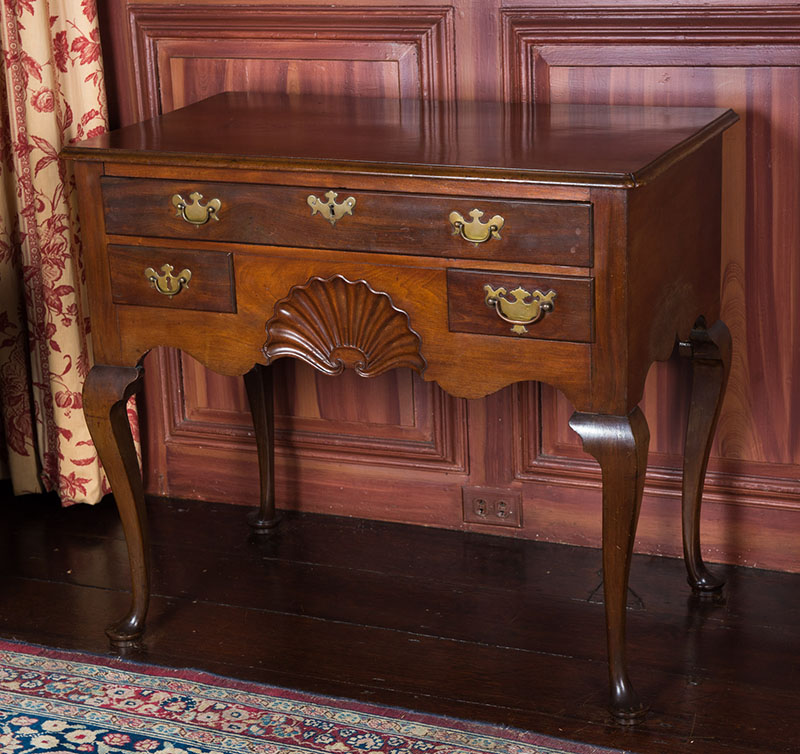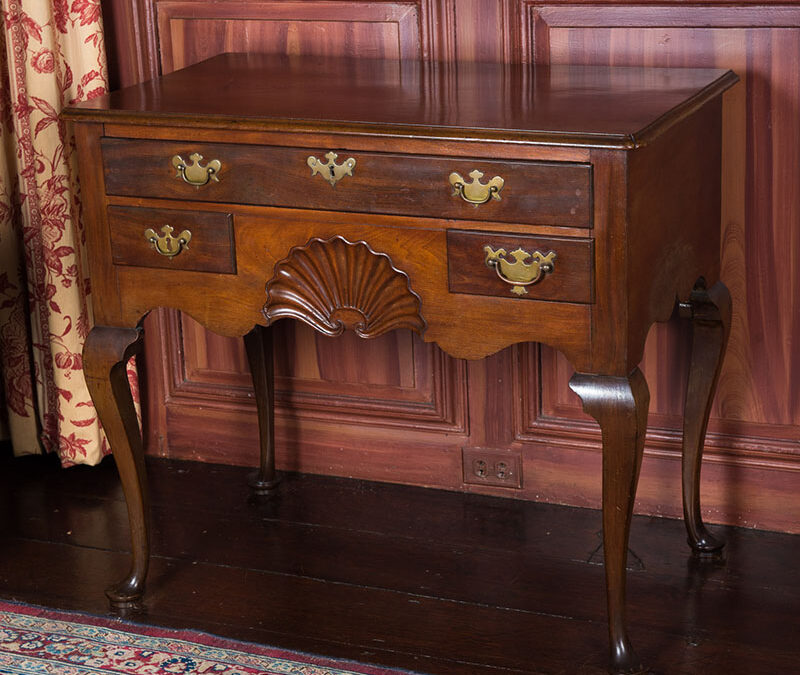Dressing Table

| Maker | Benjamin Baker (American, 1734–1822) |
| Date of Creation | 1764 |
| Location | Newport, Rhode Island |
| Materials | Mahogany, chestnut |
| Institution | The Preservation Society of Newport County |
| Credit Line | Purchased by The Preservation Society of Newport County |
| Accession Number | PSNC.1707 |
| Photo Credit | The Preservation Society of Newport County |
This Queen Anne style mahogany dressing table (or lowboy) was produced by Newport furniture maker Benjamin Baker (1734–1822) in 1764. The table has four cabriole legs terminating in pad feet. The drawers flank a decorative concave shell carving bearing eleven lobes. The shell form is indicative of furniture made in Newport in this period. The front apron has a chalk inscription on the back, strangely interrupted by the cutting of the apron, which may read “Benjamin Baker -he made it.” Baker is a lesser-known Newport cabinetmaker who specialized in seating furniture. Baker’s business records from 1760 to 1792 shows that his clientele included wealthy Newport merchants as well as his family and fellow craftsmen. Baker also performed contract work for other local craftsmen, including famed Newport clockmaker Thomas Claggett (c. 1730–97) in the early 1770s and cabinetmaker John Townsend (1733–1809) in the 1780s. The harvesting of mahogany for furniture pieces like this one was particularly brutal work for enslaved Africans and Indigenous people in the Caribbean and Central America. High demand for the valuable wood led to widespread deforestation and the displacement of Indigenous peoples. This lowboy descended through the Hunter family of Newport. It was exhibited in an important loan exhibition of Newport furniture at Hunter House in 1953, which inaugurated that site as a museum of Colonial craft and history operated by The Preservation Society of Newport County. The lowboy was purchased by the Preservation Society for the Hunter House collection in 1959.

